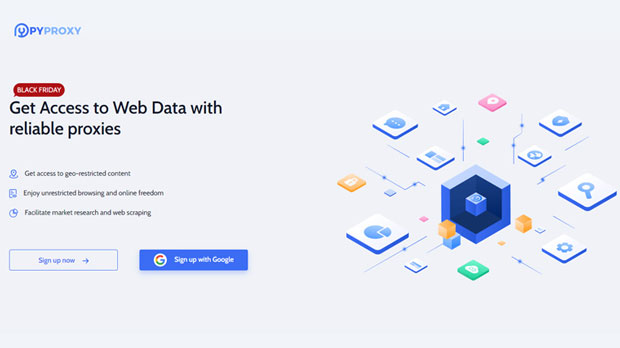What do I need to be aware of when purchasing a static IP proxy?
When purchasing static ip proxies, it is essential to consider several key factors that impact the effectiveness and reliability of the service. Static IP proxies are a valuable tool for users needing consistent online access from the same IP address, providing advantages for activities like web scraping, SEO monitoring, and accessing geo-restricted content. However, not all static IP proxies are created equal. To make an informed decision, customers should pay attention to factors like speed, reliability, cost, and the location of the IP addresses. This article will explore the important aspects to consider when purchasing static IP proxies, providing useful insights to help you choose the right service for your needs. 1. Understand the Importance of Static IPsStatic IP proxies provide a fixed IP address that remains consistent over time, unlike dynamic IP proxies, which change frequently. This stability is critical for several applications, especially those requiring reliable access or long-term data collection. For businesses or individuals needing to conduct web scraping, SEO analysis, or maintain consistent access to certain websites, static IP proxies are often the best choice. However, it’s important to understand that static IP proxies also come with specific limitations and requirements. 2. Speed and PerformanceOne of the most crucial factors when choosing static IP proxies is speed. A slow proxy can significantly hinder your productivity, whether you're gathering data or accessing content. Slow proxies often lead to increased latency, slower page load times, and an overall poor user experience. Therefore, it’s essential to ensure that the provider you choose can guarantee good speed. Ideally, look for a provider that offers high-speed connections with minimal latency, which is especially important for time-sensitive tasks such as real-time data collection or streaming content. 3. IP Location and Geo-targetingThe location of your static IP address is another critical consideration. If you need to access content from a specific region or conduct localized market research, you’ll want to make sure your static ip proxy offers IPs located in the desired geographic areas. Some proxy providers may offer a variety of IP locations worldwide, allowing you to select an IP address from a specific country or city. The closer the IP is to your target location, the better the performance and relevance of your tasks. Additionally, ensure that the provider offers a wide selection of IP addresses from different countries, allowing you to scale your needs based on your project’s requirements. Geo-targeting can be particularly useful for SEO purposes, where accurate location-based ranking data is vital.4. Reliability and UptimeReliability is another crucial aspect when selecting static IP proxies. You want to ensure that your proxies have high uptime, meaning they are available and functional most of the time. Proxies with frequent downtime can disrupt your activities, resulting in delays or even loss of data. A reliable provider will ensure a consistent and stable connection to your target website or service. Additionally, it’s worth inquiring about the provider’s infrastructure, such as their data centers and backup systems, to minimize the risk of downtime.5. Security and AnonymitySecurity and anonymity are paramount when using proxies for sensitive tasks. Static IP proxies should provide adequate security measures to ensure that your data and online activity remain private. Many proxy services offer encryption protocols to protect your information from prying eyes. When purchasing static IP proxies, be sure to inquire about the security features included, such as IP masking, encryption, and anti-fraud systems.Moreover, if you are using proxies for anonymous browsing or to protect your identity online, it’s important to check the proxy provider’s privacy policy. You want to ensure that your personal information is not shared or stored by the provider, especially if you are using the proxies for security-sensitive activities.6. Cost and Pricing StructureThe cost of static IP proxies varies depending on the provider, the number of IP addresses you need, and the additional features offered. While it may be tempting to opt for the cheapest option, it’s essential to consider the long-term value of the service. Lower-cost proxies may come with limitations in terms of speed, security, or location options. In contrast, a higher-priced service may offer better performance, additional features, and better customer support.Before making a purchase, evaluate your needs and ensure that the pricing structure aligns with your budget. Consider whether the provider offers flexible payment plans, such as pay-per-use or subscription-based models, to fit your requirements. It’s also advisable to inquire about any hidden fees or additional charges to avoid unexpected costs down the line.7. Customer Support and Service QualityWhen using static IP proxies, customer support can play a significant role in resolving any issues that arise. A reliable support team can help you troubleshoot problems, address technical issues, and offer assistance with any queries you may have. Before purchasing a service, research the level of customer support the provider offers. Look for providers with responsive and knowledgeable support teams that can assist via multiple channels, such as email, live chat, or phone.Additionally, ensure that the provider has a good reputation for handling customer concerns promptly and efficiently. You may want to check reviews and testimonials from previous clients to get a sense of the provider’s service quality.8. Scalability and FlexibilityAs your business or project grows, your need for static IP proxies may increase. Therefore, it’s essential to choose a provider that can scale with your requirements. Scalability is important if you plan to expand your use of proxies or require more IP addresses over time. Ensure the provider offers a flexible plan that allows you to easily upgrade or add more IP addresses without significant hassle. It’s also worth checking if the provider can accommodate your specific needs in terms of usage volume, location, or custom configurations. Scalability ensures that you can adapt to changing needs without having to switch providers.9. Compatibility and IntegrationAnother important consideration when purchasing static IP proxies is how easily they integrate with your existing systems or software. Some proxies may work better with certain platforms or applications, while others may require additional configuration. Be sure to check the compatibility of the proxy with your current setup, especially if you are using tools like web scraping software, SEO monitoring tools, or other automated systems.Providers that offer easy integration and configuration guides can help you save time and effort in getting your proxies up and running.ConclusionWhen purchasing static IP proxies, it is important to consider various factors, such as speed, reliability, cost, security, and support. By evaluating the features and performance of different providers, you can make an informed decision that aligns with your needs and ensures smooth, efficient operations. Whether you are using static IP proxies for business, research, or personal use, ensuring that you select the right provider will greatly impact the effectiveness and success of your online activities.
2025-02-05
























































